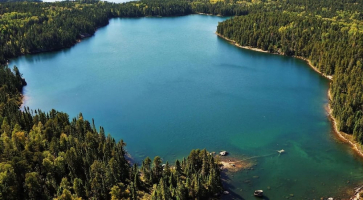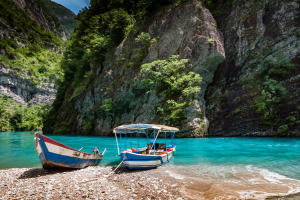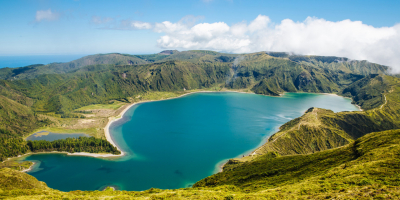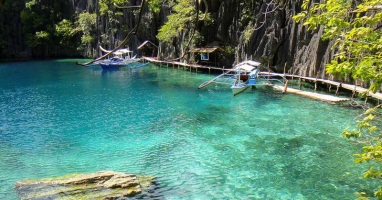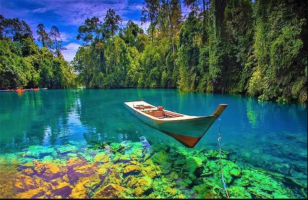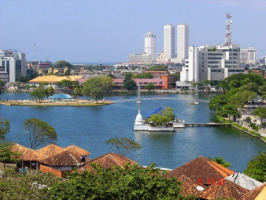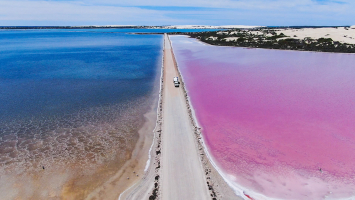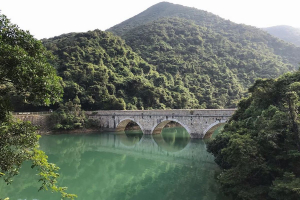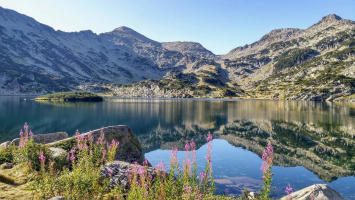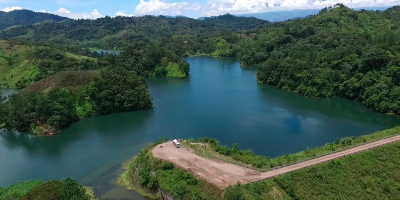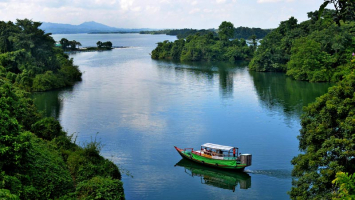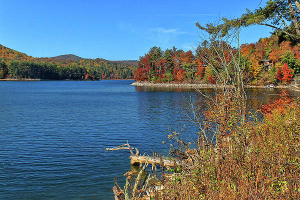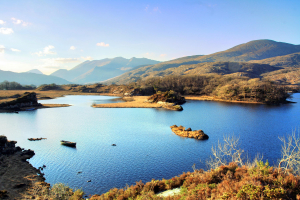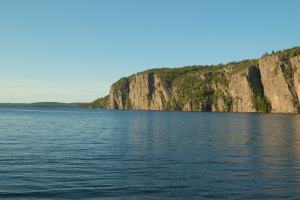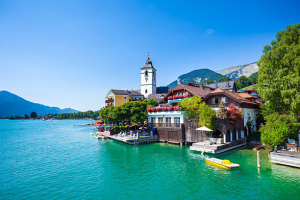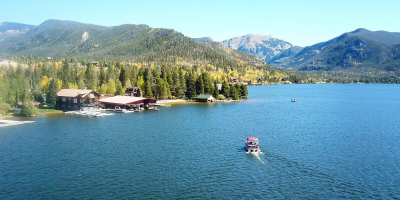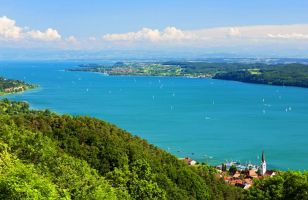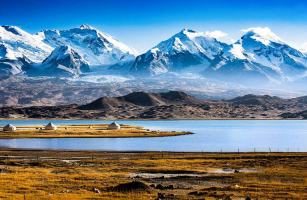Top 7 Most Beautiful Lakes in Mongolia
The lakes are the ideal summer destination for those who want a place to relax and cool off without descending to cramped beach destinations. In a beautiful ... read more...region like Mongolia, there is no shortage of beautiful lakes. Let's join Toplist to discover the most beautiful lakes in Mongolia!
-
One of the most beautiful lakes in Mongolia is Lake Khövsgöl. By volume and size, Lake Khövsgöl is the second-largest freshwater lake in Mongolia. It is situated about 200 kilometers west of Lake Baikal's southern tip, close to Mongolia's northern border. The "Younger sister" of those two "sister lakes" is how people refer to it.
At the base of the eastern Sayan Mountains in northwest Mongolia, close to the Russian border, sits Lake Khuvsgul. It is 136 kilometers long, 262 meters deep, and 1,645 meters above sea level. Nearly 70% of Mongolia's fresh water and 0.4% of the world's freshwater are contained in this lake, which is the second-largest freshwater lake in Asia. At the lake's southernmost point is the village of Hatgal.
Its name, "Mongolian Blue Pearl," refers to its crystal-clear, azure seas. Lake Khövsgöl, a haven for numerous birds and other animals, is a true haven. There are many mountain ranges surrounding the lake. The highest mountain is Bürenkhaan/Mönkh Saridag (3,492 meters), whose peak is located precisely on the border between Russia and Mongolia to the north of the lake. The lake entirely freezes over in the winter, and the ice cover is sturdy enough to support large trucks. Transport routes on the lake's surface provide alternatives to the regular highways. To stop both oil spills and trucks breaking through the ice from polluting the lake, this practice has been outlawed.
Location: near the northern border of Mongolia
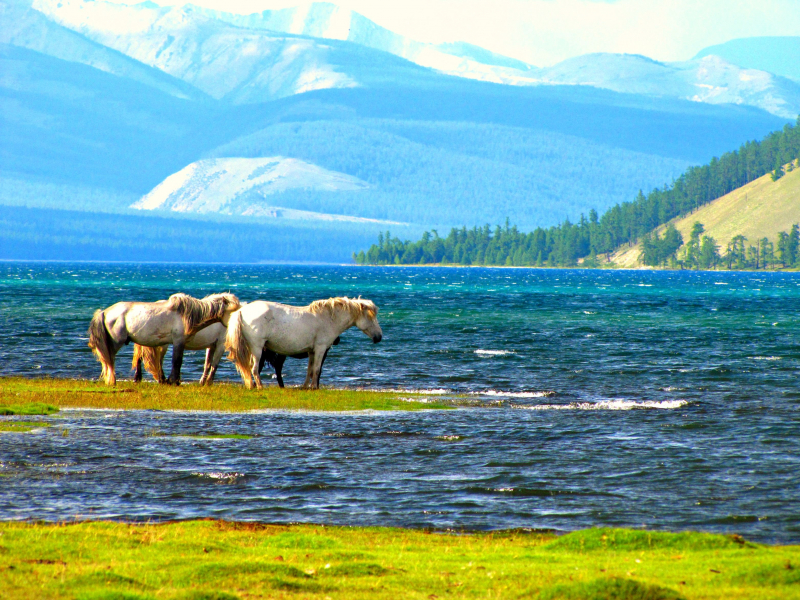
Photo: pinterest.com 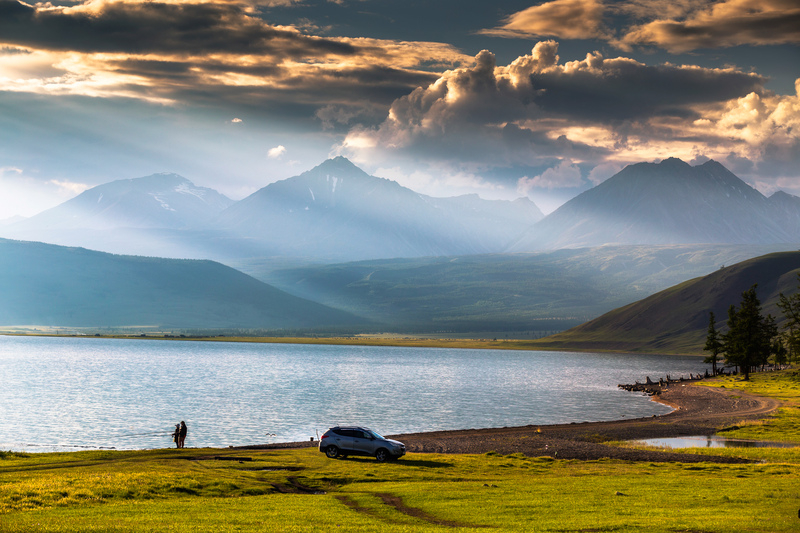
Photo: akipress.com -
In the Khangai Mountains in central Mongolia, there is a lake called Terkhiin Tsagaan Lake, also called The White Lake. The Suman River originates from the lake, while the Khorgo volcano is situated close to the lake's eastern edge. Khorgo-Terkhiin Tsagaan Nuur National Park is where the lake is situated.
The Terkhiin Tsagaan, a tiny gem of Arkhangai, emerged following Mount Khorgo's volcanic eruption, which was located east of the lake. The lake is 16 km long, 4–10 km wide, and 20 meters deep on average. Because of the location's still-very-natural characteristics, the fauna is abundant here. On your journey, you might be able to spot deer, wild boars, or large cormorants.
Along the lake's northern and eastern banks, there are a few locally owned and operated guest gers and ger camps (open from early June to late September). It is incredible to observe the nomads residing on the southern mountain slopes, overlooking the serene lake. The national park is overrun by nomads and their innumerable yaks and fenceless grazing herds of livestock. The national park offers opportunities for afternoon lake swimming, hiking, mountain climbing, fishing, bird watching, motor boating, horseback riding, and encounters with nomadic people.
Location: Khangai Mountains, Mongolia
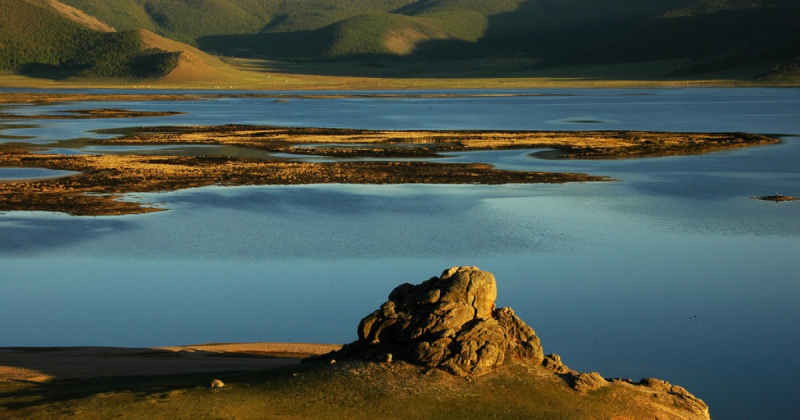
Photo: migolatravel.com 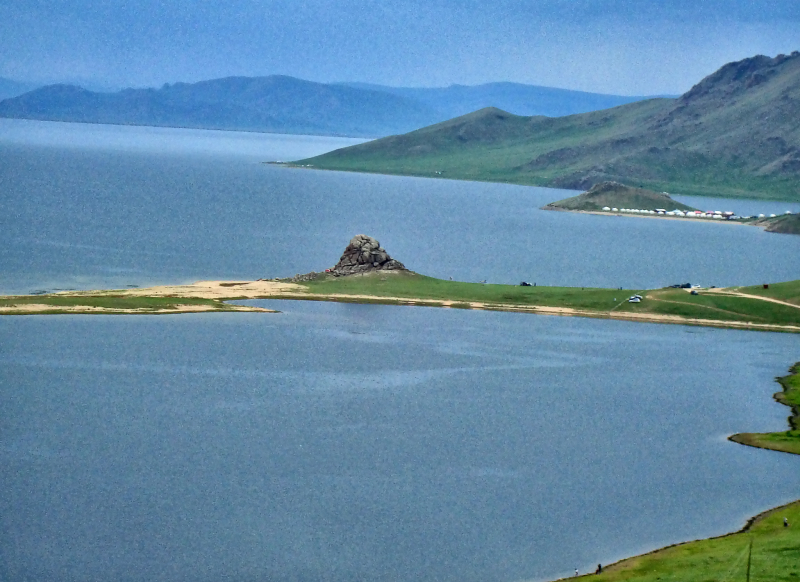
Photo: Wikiwand.com -
Lake Khar is found in the province of Zavkhan, 110 kilometers from Uliastai, and west of the Khangai range, northeast of the town of Erdenekhairkhan.
Awe-inspiring scenery may be found in this turquoise-blue lake. Sand dunes from Bor Khyar surround it and literally descend into its waters. The panorama is completely completed by the mountains of Tudevtei in the north, Burkhantolgoi and Burgas in the east, and Tovkhosh in the southwest. Lake Khar is 30 kilometers long, 5 to 10 kilometers broad, and has a depth of 48 meters. Two islands, Ikh, or the "large," and Baga, or the "little," Avkhash, are visible on the lake.
It is the only actual wilderness in Mongolia because there are no people or domestic animals living there. Wolf, moose, red deer, gazelle, wild boar, lynx, and brown bear inhabit this area. This lake is about 1800 meters above sea level. It is close to where several Asian rivers begin, some of which go east to the Pacific Ocean and others north to the Arctic Ocean. This turquoise blue lake is an oasis in the middle of the desert, surrounded by the sand dunes of Bor Khyar that reach into its waters. Anglers will be delighted by Lake Khar's reputation as a superb fishing location. Ornithology fans will also find it to be a wonderland, where they can see more than a dozen endemic species.
Location: Great Lakes Depression, Western Mongolia
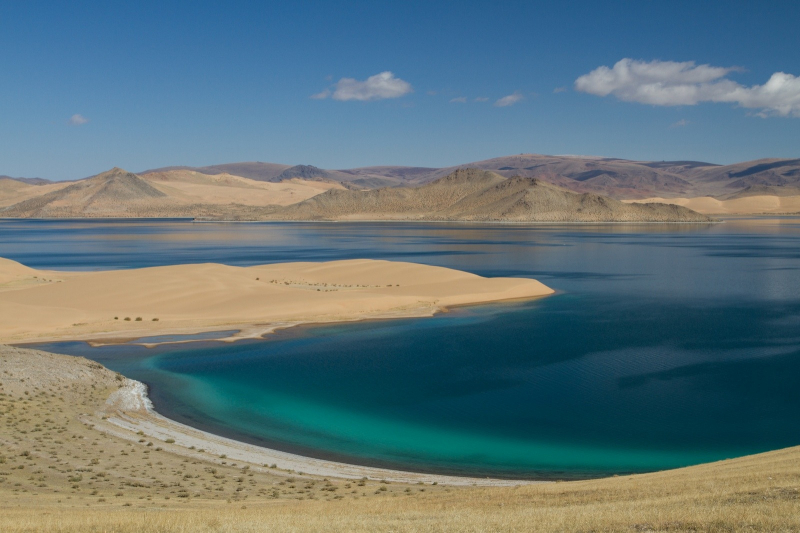
Photo: mongolia-trips.com 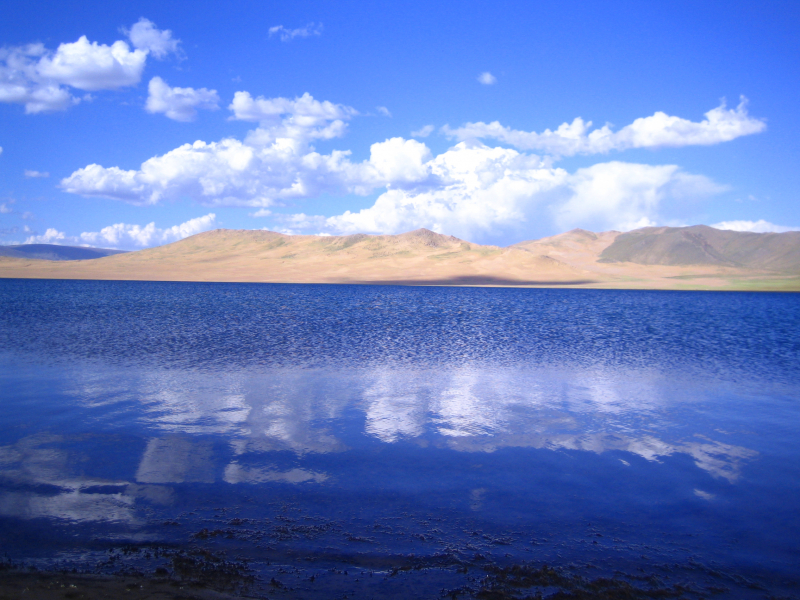
Photo: commons.wikimedia.org -
In western Mongolia, northwest of the Great Lakes Hollow and close to the western margin of the Uvs Nuur basin, there is a salty lake called Üüreg Lake in an endorheic basin. On the west side of the lake is the Tsagaan river valley. Üüreg Lake is also one of the most beautiful lakes in Mongolia.
The lake's sides are smooth and slightly sloping; there are no bays or peninsulas. Several rivers empty into the lake, but the majority just occasionally. The Khari River, which empties into the northwest of the lake, is the largest river with a steady flow. Marshes and vegetation resembling swamps can be found close to the Khari River's mouth. Due to significant evaporation and a lack of outflow, the lake water is salty.
Since the Üüreg Lake depression is a desert, the water's surface evaporates a much. 800-900 mm of water evaporates annually on average. Rainfall and groundwater help to make up for this water loss in addition to the rivers' intake. The lake waters freeze from October to May, generating a block of ice that can be between 1.2 and 1.5 meters thick. Many endangered animals, including the Bald Eagle, the Cycloid Goose, the Phallas Cat, and the Red Fox, have found sanctuary in this lake.
Location: western Mongolia
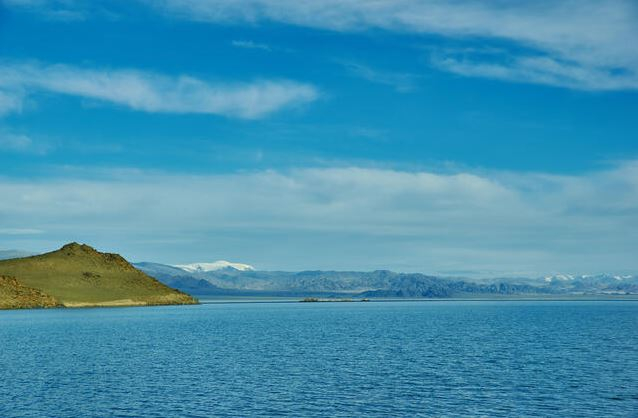
Photo: alamy.com 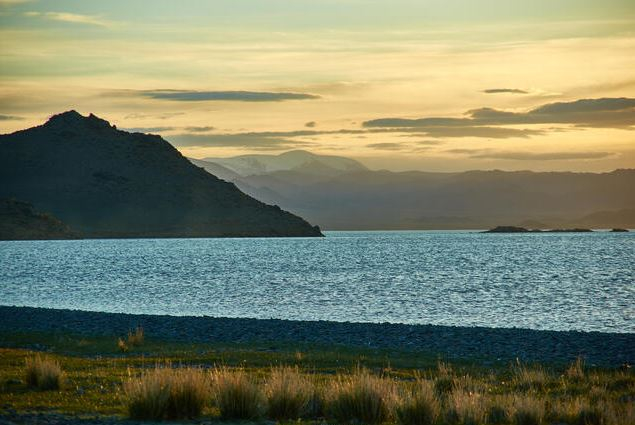
Photo: alamy.com -
In the middle of central Mongolia's grasslands and mountain steppes is the stunning freshwater lake of Ugii. The lakes are conveniently located in central Mongolia, 360 kilometers west of Ulaanbaatar, 80 km northeast of Kharkhorin, 95 km northwest of the Elsentasarkhai semi-desert, and 130 kilometers from the town of Tseserleg in the province of Arkhangai. The distance between the lake and the closest town, Ugii Nuur, is about 25 kilometers.Famous for its bird life is Lake Ugii. A total of 150 different species of water birds congregate around Lake Ugii, including endangered species like the Dalmatian pelican, spoonbill, cranes, and ducks. You can find a water bird research station here. There is an ait in this bluish lake where endangered migratory bird species breed. Ugii Lake has been added to the Ramsar List of Wetlands of International Importance by the Ramsar Convention as a result of its significance as a breeding and staging habitat for numerous waterfowl.
Bird watchers, weekend visitors, and those who enjoy leisurely holidays will all enjoy Ugii Lake. Tourism activities for leisure guests include staying in a traditional ger near a lake, hiking, horseback riding, fishing, boating, visiting an information center, and some common bird watching.
Location: eastern Arkhangai, in central Mongolia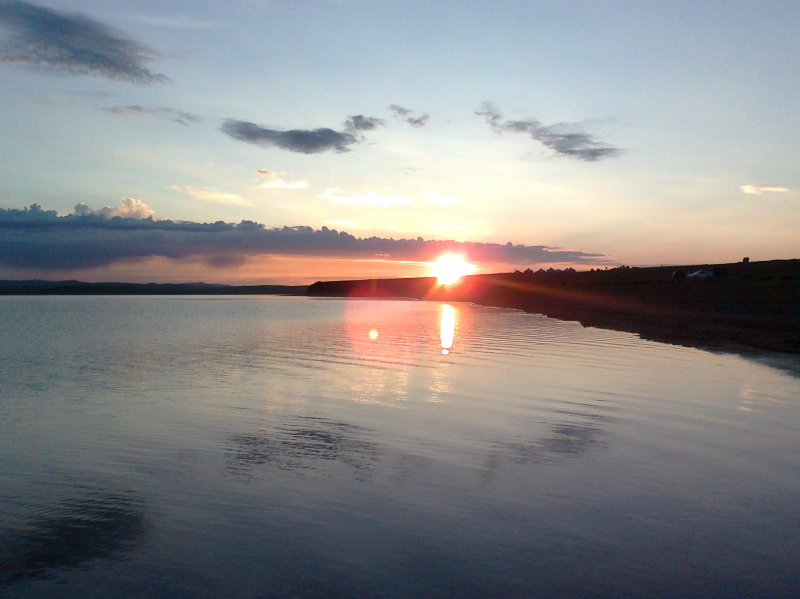
Photo: Wikipedia 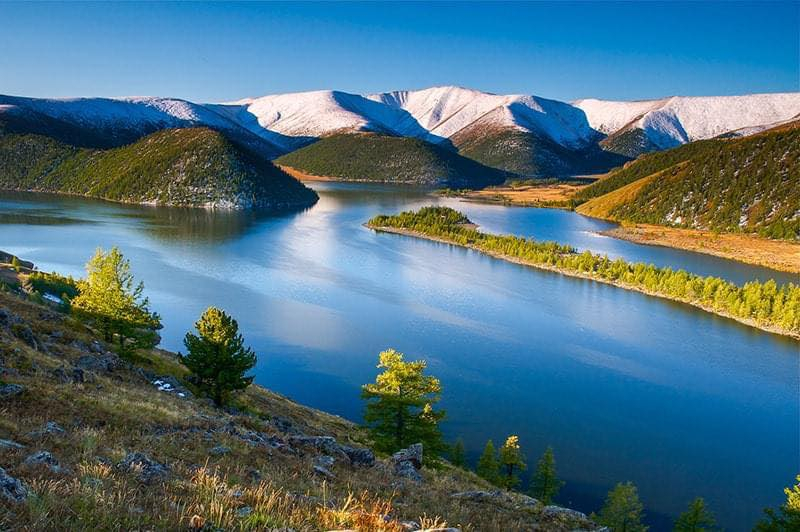
Photo: facebook.com -
Khyargas Lake is situated at a height of roughly 1025 meters above sea level in the Khyargas district of the Uvs province. It is one of the four lakes in Mongolia with a surface area of more than 1000 km2, and due to its dimensions of 75 km long by 31 km wide, it is regarded as the second biggest lake on the west side of the country. 50 meters is the typical depth. Unlike the largest lake in the nation, Khusvgul, which contains fresh water, this lake is salty. One thing to keep in mind is that this significant salty lake receives some of its water from a smaller, freshwater lake known as Airag.
Khyargas Lake is a component of an ecosystem that the government has protected and is regarded as a National Natural Park. A preservation initiative covering roughly 3,328 km2 was started in 2000. It has been designated as a priority and distinctive terrestrial ecoregion by the World Wildlife Fund (WWF), which refers to it as The Great Lakes Basin.
This lake's abundance of nearby activities is another quality besides its beauty. You may go fishing, for instance, where you can find some unusual fish species like pikes and herrings from the Altai and Nokhoi. Many migratory and migrant birds are congregating near the lake, making it feasible to observe birds there as well. Khyargas Lake is one of the most beautiful lakes in Mongolia.
Location: District of Khyargas, province of Uvs, Mongolia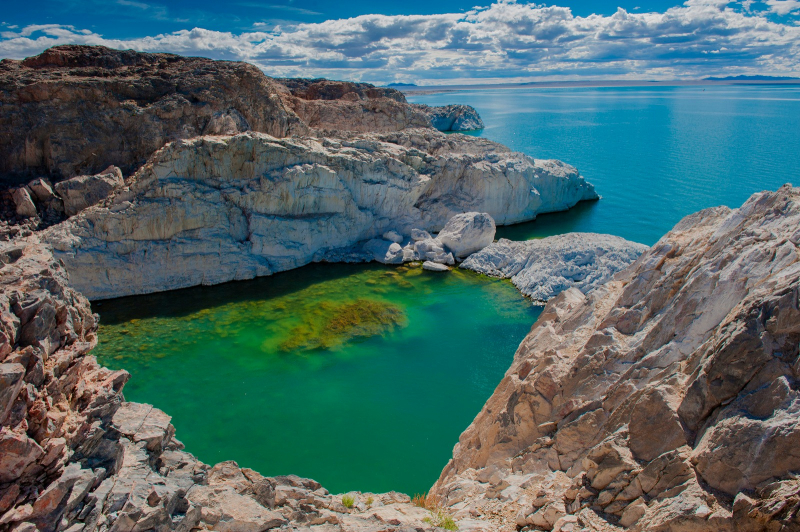
Photo: mongolia-trips.com Video: https://www.youtube.com/watch?v=iOyXLJMnURg -
A heavily salinized lake called Uvs Lake is located in the Uvs Nuur Basin, a tiny portion of which is in Russia. With a surface area of 3,350 km2 and an elevation of 759 m above sea level, it is the largest lake in Mongolia by area. The Tuva Republic of the Russian Federation is where the lake's northeastern tip is located. Ulaangom is the largest village next to the lake.
This small, extremely salty body of water is all that's left of a much larger, saltier sea that formerly spanned a far wider area. Rare creatures like the Mongolian gerbil, the endangered snow leopard, the wild sheep, and the Asiatic ibex can be found in desert and mountainous regions. The Uvs-Nuur-Basin has been designated a UNESCO biosphere reserve since 1997.
The basin, which has a surface area of over 70,000 km2, is one of the continent's best-preserved natural steppe landscapes. The world's farthest southern tundra zone and its westernmost northern desert converge here. In comparison to Uvs Lake, the basin is home to a number of smaller lakes, all of which serve as major resting places for migrating waterfowl.
The city of Ulaangom is 40 kilometers south of Uvs and can be reached by car in an hour. Trekking, horseback riding, camel riding, rafting, kayaking, climbing, and bird-watching are some of the main pursuits that may be made at and near Uvs Lake.
Location: Uvs Nuur Basin in Mongolia with a small part in Russia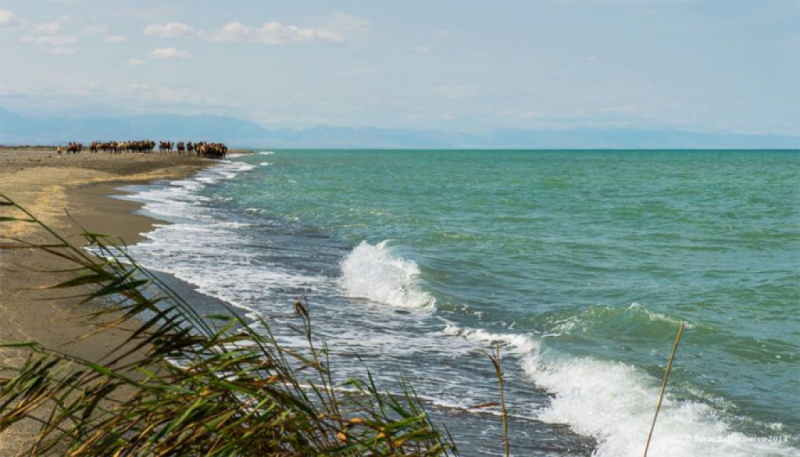
Photo: mongolia-guide.com Video: https://www.youtube.com/watch?v=oDEH25_KY9M










